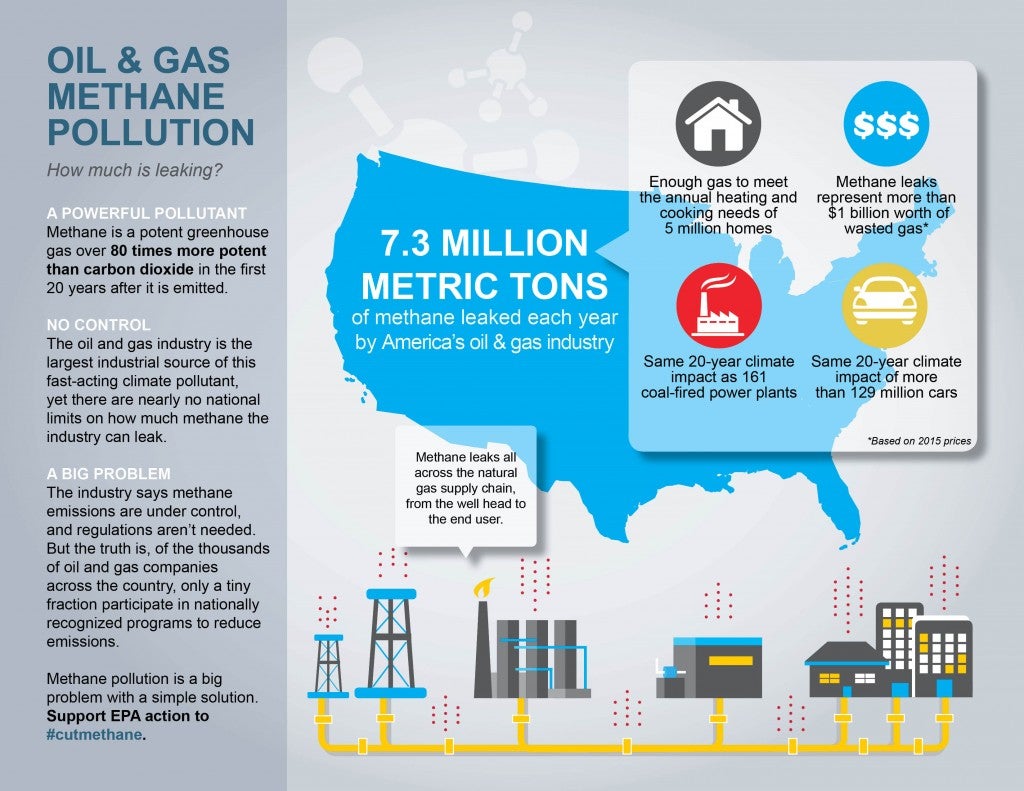When The Polluter Lobby Pollutes The Facts on Methane
The oil and gas industry emits at least 7 million metric tons of methane pollution into the atmosphere each year with a growing mountain of scientific evidence that suggests the real amount is actually even higher. Despite the fact that this pollution has an undue effect on global warming, the industry effectually wants us to “be ok” with this pollution.
The latest piece from industry lobbying group Energy In Depth (EID) claims that recent methane research finds “very low emissions,” and that regulatory action to reduce them further is unwarranted. It isn’t the first time we’ve heard this argument and for that reason, here’s a refresher on the facts.
We know reducing emissions is doable, in part because some responsible companies are doing it. There are forward thinkers in the industry who enroll in voluntary emission reduction programs operated by the Environmental Protection Agency—and they have shown what is possible. But these 20 or so companies represent only a tiny fraction of the thousands of producers across the country.
Further, the areas where we’ve seen meaningful declines in emission are areas where there have been either concrete or pending regulations to control emissions. Straightforward voluntary efforts to reduce emission are useful, but they are no substitute for regulations.
One reason regulations are so critical to securing reductions? A phenomenon called superemitters.
Time and again, researchers have found that these large, unpredictable leaks – sometimes caused by equipment failures, sometimes by human error, and sometimes by other factors altogether – are significant contributors to industry’s overall emissions. Just a couple of months ago, a study published in Proceedings of the National Academy of Sciences showed methane emissions in the gas-rich Texas Barnett Shale are 90 percent higher than official estimates suggest, mainly because EPA tracking methods don’t accurately account for these sources.
And the only sure-fire way to address these emissions is through regularized, widespread monitoring of facilities across the oil and gas supply chain in order to quickly find and fix the leaky equipment.
It would be nice to think that industry would do this on their own, but few producers have raised their hand and committed to implement the leading leak detection practices, much less several of the other commercially available and cost-effective emission reduction strategies known to the industry.
That means regulations are the next logical solution for addressing the problem. Requiring companies to check equipment for emissions, that, not only contribute to climate change but can also impact air quality, is not an extreme ask. Nor are taking any of the other proven, cost-effective steps to reduce emissions available to industry. On the contrary, it’s the responsible thing to do.
EID regularly touts the benefits of gas over coal – and their assertions are true as far as they go. But they don’t go far enough to tell the whole story. EDF has never minimized the important role of natural gas in reducing our nation’s CO2 emissions. But natural gas is over 95% methane, a pollutant that will trap 84 times as much heat as CO2 over 20 years. Data from the Intergovernmental Panel on Climate Change suggests methane is responsible for approximately 25 percent of today’s global warming.
In order to live up to its billing as a cleaner energy resource, natural gas’s methane problem has to be addressed.
Another related fixation at EID is the leak rate of natural gas, and the crossover point at which greenhouse benefits relative to coal disappear. But this is completely irrelevant when the question has to do with absolute, not relative impacts of methane emissions. It’s not the rate or percentage of gas leakage that matters. It’s the volume. As things stand today, the oil and gas industry’s annual methane emissions will have the very same climate impact as the annual emissions from 160 coal plants during the next two decades.
A recent poll showed that less than a third of Americans trust the oil and gas industry to operate responsibly – and that sentiment applies across party lines. This latest material out from EID is just one example why. Continuing to push back against any and all regulations, even the ones that apply commonsense, cost-effective solutions, is what the public has come to expect from the industry.













One Comment
Frackers deny, then they lie. Sometimes they pretend that they’ll obey the rules and do good. Don’t bet on it.